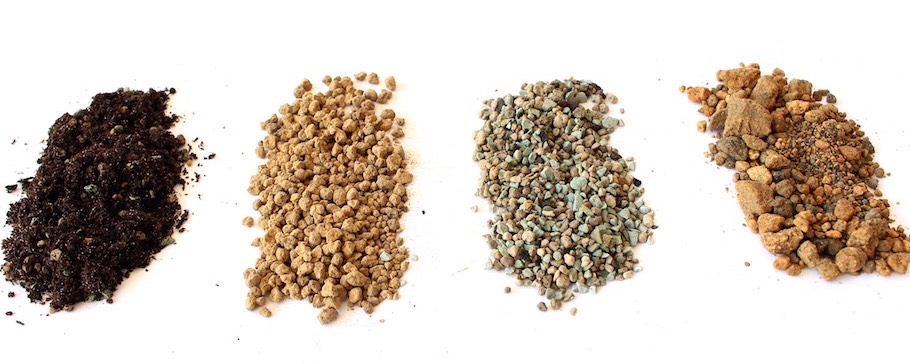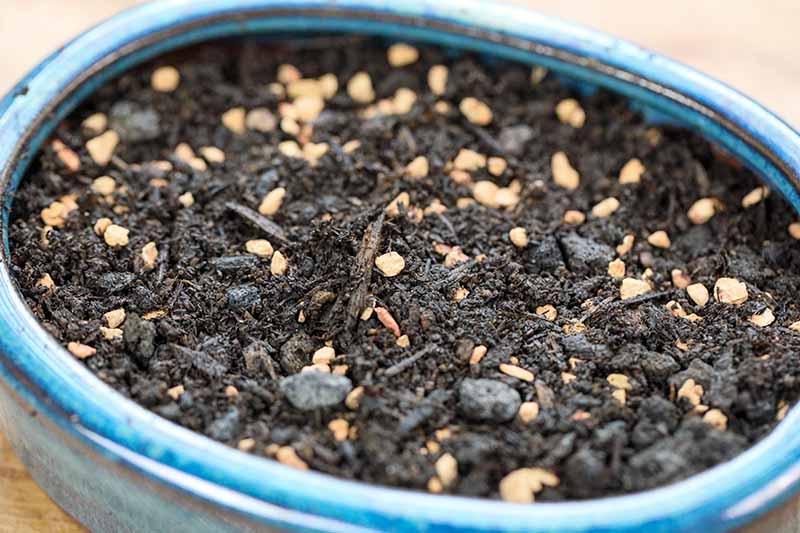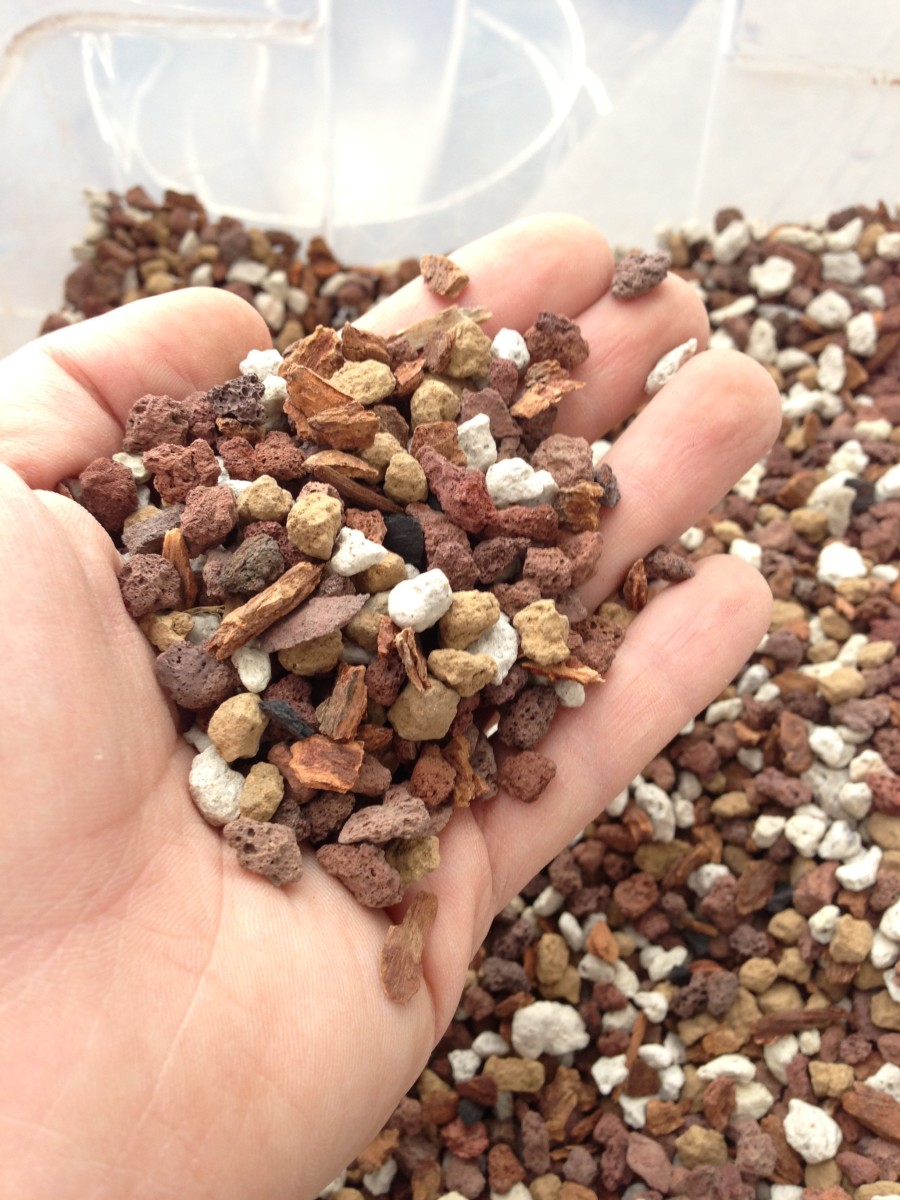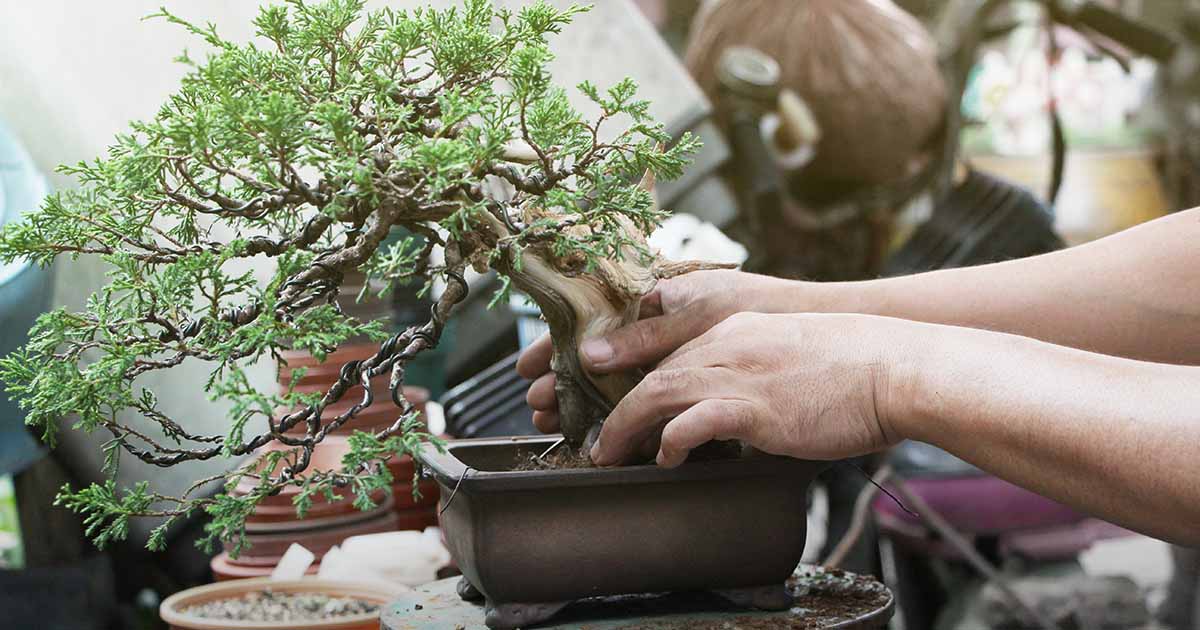On this page, we will take a look at the different sorts of soil and substrates used in bonsai cultivation, such as organic and natural and inorganic alternatives.
We are going to also explore advisable soil mixtures for a variety of bonsai species, such as deciduous, coniferous, and indoor varieties. From akadama and pumice to moss and river sand, we will dive into your interesting globe of bonsai soil and make it easier to realize why It can be an essential Section of cultivating these exquisite trees.

Bonsai soil
What is bonsai soil?
Bonsai soil is a specialized type of soil that is specifically formulated for growing and maintaining bonsai trees. Unlike regular garden soil, bonsai soil is well-draining and provides the necessary nutrients and moisture balance for the tree's root system. The composition of bonsai soil is carefully designed to meet the unique needs of bonsai trees, ensuring their health and longevity.
The importance of bonsai soil
The choice of soil plays a crucial role in the success of your bonsai tree. The right soil provides optimal drainage, allowing excess water to flow freely and preventing root rot. It also promotes a healthy and well-developed root system, which is essential for the overall health and growth of the tree. Bonsai soil retains moisture while allowing air to reach the roots, striking the perfect balance for the tree's needs. Choosing the right bonsai soil is essential for maintaining a healthy and thriving bonsai tree.
Bonsai substrates
What are bonsai substrates?
Bonsai substrates refer to the different materials that can be used to create the ideal soil composition for bonsai trees. These substrates are carefully chosen to meet the specific needs of different species of bonsai trees and to ensure proper water drainage and nutrient availability.
Different types of bonsai substrates
There are various types of bonsai substrates available, each with its own unique characteristics and benefits. Some common bonsai substrates include:
- Organic materials: These include ingredients such as bark, peat moss, and coconut coir. Organic substrates help retain moisture and provide essential nutrients to the bonsai tree.
- Inorganic materials: These consist of parts like pumice, lava rock, and akadama. Inorganic substrates supply outstanding drainage, making sure that excessive drinking water would not accumulate round the roots on the bonsai tree.
- Soil amendments: They are substances which have been added into the soil combination to improve its Qualities. Examples of soil amendments include things like perlite, vermiculite, and sand. They improve the soil's aeration, drinking water-Keeping capability, and nutrient availability.
By understanding the differing types of bonsai substrates and their Houses, you may find the best suited one for the bonsai tree's demands.
Organic or Inorganic Soils
Organic soils for bonsai
Natural and organic soils for bonsai are composed of all-natural products which include bark, peat moss, coconut coir, and compost. These products supply a rich source of nutrients for the bonsai tree and endorse healthful root enhancement. Natural and organic soils even have superior drinking water retention Houses, making certain the tree gets enough moisture amongst watering periods. On the other hand, it is vital to notice that organic and natural soils may perhaps break down after a while and turn out to be compacted, resulting in lousy drainage and likely root issues.
Inorganic soils for bonsai
Inorganic soils for bonsai encompass products like pumice, lava rock, akadama, and soil amendments like perlite or vermiculite. These components have outstanding drainage Attributes, protecting against waterlogged soil and endorsing aeration across the roots. Inorganic soils are preferred by a lot of bonsai fans due to their longevity and talent to offer a stable atmosphere for your bonsai tree's root system. Nonetheless, They might call for much more frequent watering and extra fertilization, as they do not maintain just as much dampness or nutrients as natural soils.
Pros and cons of making use of natural and inorganic soils for bonsai
Deciding on among organic and natural and inorganic soils for your bonsai tree is determined by various things, such as the unique species of tree, your climate, and private Tastes. Listed below are the advantages and disadvantages of every:
Organic and natural soils:
- Execs: Present nutrients, superior h2o retention, advertise wholesome root improvement.
- Negatives: May possibly break down eventually, probable for very poor drainage Otherwise effectively preserved.
Inorganic soils:
- Pros: Great drainage, lengthy-lasting, steady atmosphere for roots.
- Downsides: Fewer h2o retention, could call for additional Recurrent watering and fertilization.
By contemplating the benefits and drawbacks of both of those natural and organic and inorganic soils, you can also make an educated decision according to the particular wants within your bonsai tree.
Soil components
Vital elements of bonsai soil
Bonsai soil is usually made up of three principal components: grit, natural and organic subject, and clay. These components do the job alongside one another to produce The perfect soil structure to the bonsai tree's root process.
- Grit: Grit, for example sand or perlite, gives drainage and aeration while in the soil. It helps protect against waterlogging and makes it possible for air to get to the roots.
- Natural subject: Natural make any difference, such as compost or bark, gives nutrients to the bonsai tree. Furthermore, it helps keep dampness and Increase the soil's All round structure.
- Clay: Clay particles deliver some water retention attributes and aid bind the soil together. Nevertheless, an excessive amount of clay can lead to inadequate drainage and compaction.
Purpose of each and every soil ingredient
Just about every soil component plays an important function in developing a well-balanced and balanced natural environment for your bonsai tree's roots.
- Grit: Grit offers the required drainage and aeration in the soil. It stops the roots from sitting down in stagnant drinking water, lessening the chance of root rot and marketing In general root health and fitness.
- Natural make a difference: Natural and organic issue supplies essential nutrients towards the bonsai tree. It aids in moisture retention and contributes to the general composition with the soil.
- Clay: Clay particles assist bind the soil jointly and provide some water retention potential. On the other hand, it's important to balance the quantity of clay to avoid problems like inadequate drainage and compaction.
By comprehension the roles of each soil element, you could make a well balanced bonsai soil mix that meets the specific needs within your tree.

Recommended Bonsai soil mixtures
Common bonsai soil mixtures
There are several common bonsai soil mixtures that have been proven effective for various types of bonsai trees. These mixtures typically consist of a combination of inorganic substrates, organic matter, and soil amendments.
Some of the commonly used bonsai soil mixtures include:
- Akadama, pumice, and lava rock: This mixture is popular among bonsai enthusiasts for its excellent drainage and water retention properties.
- Akadama, lava rock, and natural subject: This combination brings together the key benefits of inorganic substrates With all the nutrient-abundant properties of natural subject.
- Pumice, perlite, and bark: This combination provides superior drainage and aeration even though retaining some moisture and offering nutrients.
These are generally just a couple examples of bonsai soil mixtures, and the ideal mixture will depend upon the specific requirements of the bonsai tree and also your climate.
Variables to think about when picking a bonsai soil combination
When picking out a bonsai soil combination, it's important to take into account the subsequent variables:
- Species of bonsai tree: Distinctive species have different moisture and nutrient needs. Investigation the particular desires within your tree to pick out a soil combination that fulfills its needs.
- Local weather: The local weather you live in can have an impact on the moisture retention Qualities in the soil. Look at the ordinary humidity and temperature close to you When picking a soil mixture.
- Watering practices: Your individual watering habits and routine ought to align While using the soil combination you decide on. Some mixtures demand a lot more Regular watering, while others retain dampness for extended intervals.
- Price range: Some soil components can be dearer than others. Take into consideration your spending plan when picking out a soil mixture.
By taking these factors under consideration, it is possible to pick a bonsai soil mixture that gives the top expanding conditions on your tree.
Deciduous Bonsai soil
Greatest soil composition for deciduous bonsai
Deciduous bonsai trees, such as maple or birch, have unique soil demands to help their development and health and fitness. The most effective soil composition for deciduous bonsai typically features a mix of organic and natural make a difference, inorganic substrates, and soil amendments.
A proposed soil composition for deciduous bonsai may possibly contain:
- Akadama: Presents good drinking water retention even though enabling for drainage. In addition it releases nutrients little by little eventually.
- Pumice: Encourages aeration and drainage from the soil, avoiding waterlogging.
- Bark or peat moss: Adds natural and organic matter towards the soil, giving nutrients and humidity retention.
This soil composition makes certain that the roots of deciduous bonsai trees acquire the correct stability of humidity, nutrients, and oxygen for exceptional advancement.

Coniferous and Pine soil
Ideal soil mixture for coniferous and pine bonsai
Coniferous and pine bonsai trees have specific soil requirements due to their water retention needs and preference for acidic soil. An ideal soil mixture for coniferous and pine bonsai should provide good drainage while retaining moisture and maintaining the desired pH level.
A recommended soil mixture for coniferous and pine bonsai may include:
- Akadama: Provides excellent water retention while allowing for sufficient drainage. It releases nutrients slowly over time.
- Pumice: Promotes aeration and drainage inside the soil, blocking waterlogged roots.
- Peat moss: Adds organic and natural matter and acidity to the soil, generating a really perfect pH stage for coniferous and pine trees.
This soil mixture ensures that the roots of coniferous and pine bonsai trees receive the proper balance of moisture, nutrients, and acidity for his or her precise demands.
Akadama
What on earth is akadama?
Akadama is really a type of clay soil that may be widely Employed in bonsai cultivation. It is known for its exceptional drinking water retention Qualities, which assure a gentle source of humidity into the bonsai tree's roots. Akadama is additionally prized for its capability to release nutrients gradually over time, furnishing a reliable source of nourishment with the tree.
Great things about making use of akadama in bonsai soil
Applying akadama in bonsai soil offers various Positive aspects:
- Water retention: Akadama has Fantastic water retention Houses, allowing for it to hold dampness without getting waterlogged. This ensures that the bonsai tree's roots get a regular supply of water, marketing healthy expansion.
- Nutrient release: Akadama slowly releases nutrients into the soil eventually, supplying a dependable supply of nourishment for your bonsai tree. This lowers the need for Recurrent fertilization and aids maintain a balanced nutrient profile.
- Aeration: Regardless of its h2o retention abilities, akadama also gives adequate aeration to your bonsai tree's roots. It permits air to reach the root process, avoiding issues such as root rot as a consequence of deficiency of oxygen.
By incorporating akadama into the bonsai soil, you'll be able to develop an optimal rising environment for your personal tree, guaranteeing its wellbeing and vitality.

Lava rock
How lava rock benefits bonsai soil
Lava rock is a popular component in bonsai soil mixtures due to its excellent drainage and aeration properties. It is typically used in conjunction with other substrates to create the ideal soil composition for bonsai trees.
The benefits of lava rock in bonsai soil include:
- Drainage: Lava rock provides excellent drainage, preventing waterlogging and ensuring that excess water flows freely through the soil. This helps prevent root rot and provides a healthy environment for the roots to thrive.
- Aeration: The porous character of lava rock will allow air to circulate in the soil, supplying oxygen for the bonsai tree's root method. Right aeration is crucial for balanced root progress and Total tree advancement.
- Longevity: Lava rock can be a long lasting materials that doesn't break down conveniently. This makes certain that the soil framework remains secure over time, reducing the necessity for Repeated soil replacements.
Lava rock is available in several dimensions and styles, allowing for for personalisation depending on the precise demands of the bonsai tree and soil requirements.
Differing types of lava rock
There are actually differing kinds of lava rock that may be Employed in bonsai soil mixtures, including:
- Black lava rock: Black lava rock is really a frequently utilised product in bonsai soil mixtures. It provides outstanding drainage Qualities and adds an aesthetic ingredient to the general presentation from the bonsai tree.
- Pink lava rock: Crimson lava rock is an additional preferred decision in bonsai soil mixtures. It provides similar drainage and aeration Advantages as black lava rock but has a distinct reddish colour that adds visual curiosity into the container.
The more info two black and purple lava rocks are commonly available and might be simply included into your bonsai soil combination.
Potting
Essential techniques for prosperous bonsai potting
Potting is actually a important system in bonsai cultivation, mainly because it directly impacts the well being and improvement of your tree's roots. Here are a few critical tips for effective bonsai potting:
- Select the appropriate pot measurement: Decide on a bonsai pot which allows for root progress when continue to providing a cosy in good shape. Avoid pots which are as well significant, since they may lead to too much soil moisture and inadequate root development.
- Use bonsai wire: Secure the tree from the pot using bonsai wire to ensure stability. This helps prevent the tree from shifting or getting to be uprooted all through watering or strong winds.
- Trim and distribute the roots: Right before potting the bonsai tree, thoroughly trim and unfold out the roots. This encourages outward progress and stops root tangling or root-bound issues.
- Increase mesh screens: Location mesh screens above the drainage holes at the bottom from the pot to avoid soil erosion and assure proper drainage.
- Use clean bonsai soil: When potting, normally use fresh new bonsai soil to offer the required nutrients and optimum expanding situations for your roots.
By pursuing these crucial suggestions, you are able to ensure A prosperous potting approach and advertise the overall wellness and growth within your bonsai tree.
The part of bonsai pots in soil moisture Command
Bonsai pots Enjoy a crucial function in soil humidity Handle, straight impacting the health and fitness and progress from the tree. Bonsai pots are typically shallow and have drainage holes, making it possible for excess drinking water to flee and avoiding the soil from becoming waterlogged.
The look of bonsai pots promotes evaporation and air circulation, which aids control soil dampness concentrations. The shallow depth and broad opening of your pot expose a lot more surface space in the soil into the air, aiding in moisture evaporation. This stops the roots from sitting down in excessively wet soil, lowering the chance of root rot and also other h2o-similar concerns.
Also, the drainage holes in bonsai pots allow any surplus drinking water to flee, stopping waterlogged soil and endorsing aeration across the roots. Suitable aeration is important for the well being and progress of the basis technique, guaranteeing the bonsai tree receives the required oxygen for advancement.
By using bonsai pots designed for successful dampness control, you can produce a favorable natural environment for your personal bonsai tree's roots and promote its General overall health and vitality.
In summary, picking out the suitable bonsai soil is significant with the success and wellness within your bonsai tree. Comprehension the different types of bonsai substrates, the purpose of natural and organic and inorganic soils, The main element factors of bonsai soil, and the assorted recommended soil mixtures can assist you offer the ideal escalating circumstances on your bonsai tree. Whether you've got a deciduous or coniferous bonsai, incorporating elements like akadama and lava rock can enhance the soil's drainage and nutrient availability. In addition, being attentive to potting strategies and employing bonsai pots designed for moisture Management will even further support the thriving progress of your respective bonsai tree. With good click here understanding and implementation of bonsai soil methods, you'll be able to take pleasure in the splendor and artistry of bonsai cultivation For a long time to come back.
